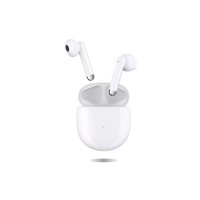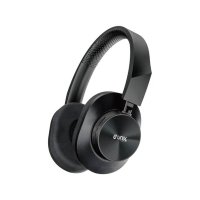How to Get the Best Sound Quality from Your Headphones?
Headphones are more than just a way to listen to music—they’re your gateway to an immersive audio experience. However, getting the best sound quality from your headphones isn’t just about plugging them in and hitting play. There are several factors that can influence the audio performance of your headphones, from the type of music you listen to, the quality of your audio files, to how you care for your gear. Here’s how you can optimize your headphones to enjoy the best possible sound quality.
1. Choose the Right Headphones for Your Needs
The journey to great sound quality starts with choosing the right headphones. Different types of headphones are designed for different purposes, and understanding which one suits your needs will make a significant difference.
Over-Ear Headphones: Best for home use and audiophiles who prioritize sound quality. They offer excellent soundstage and bass response.
In-Ear Monitors (IEMs): Great for portability and noise isolation, making them ideal for on-the-go listening.
On-Ear Headphones: A middle ground between over-ear and in-ear, offering good sound quality and portability.
Wireless Headphones: Offer convenience and mobility, but ensure they support high-quality Bluetooth codecs like aptX, AAC, or LDAC for better sound.
Tip: If sound quality is your top priority, wired over-ear headphones typically provide the best audio fidelity.
2. Use High-Quality Audio Files
No matter how good your headphones are, they can’t make up for low-quality audio files. Compressed formats like MP3s lose a lot of the detail in the music. To get the best sound, opt for high-quality audio files like FLAC, ALAC, or WAV, which retain more of the original sound data.
Tip: Streaming services like Tidal, Amazon Music HD, and Apple Music offer lossless audio options, which are a great way to experience high-fidelity sound.
3. Invest in a DAC and Amplifier
A Digital-to-Analog Converter (DAC) and amplifier can significantly improve sound quality, especially if you’re using high-end headphones. Many built-in DACs in smartphones or laptops are not designed to deliver the best audio quality. An external DAC can provide a cleaner, more detailed sound, while an amplifier can drive more power to your headphones, especially if they have high impedance.
Tip: Consider a portable DAC/amp combo if you often listen on the go, or a desktop setup for home use.
4. Ensure a Proper Fit
How your headphones fit can have a big impact on sound quality. For in-ear headphones, a good seal is crucial for bass response and noise isolation. For over-ear and on-ear headphones, the fit affects comfort and how well the drivers align with your ears.
Tip: Experiment with different ear tips (silicone, foam, etc.) for IEMs to find the best fit. Over-ear headphones should fully encircle your ears without pressing too hard.
5. Use EQ Settings Wisely
Equalizer (EQ) settings can help you tailor the sound to your preferences, whether you want more bass, clearer mids, or crisper highs. However, it’s important not to overdo it, as extreme adjustments can lead to distortion or an unnatural sound.
Tip: Start with the flat or neutral setting and make small adjustments based on the type of music you’re listening to. Some headphones come with custom-tuned EQ presets that are optimized for their drivers.
6. Keep Your Headphones Clean
Dust, sweat, and earwax can accumulate on your headphones over time, affecting sound quality. Regular cleaning can prevent this buildup and ensure your headphones deliver the best sound possible.
Tip: Use a soft, dry cloth for over-ear and on-ear headphones. For IEMs, remove the ear tips and clean them separately. Be gentle with the drivers to avoid damage.
7. Consider the Listening Environment
Your surroundings can greatly influence your listening experience. Noise and echoes can interfere with sound quality, so consider where you’re listening.
Quiet Room: Ideal for critical listening and enjoying every detail.
Noisy Environment: Use noise-cancelling headphones or IEMs with good isolation to block out distractions.
Tip: If you’re using open-back headphones, be aware that they leak sound and let in ambient noise, making them better suited for quiet environments.
8. Break in Your Headphones
Many audiophiles believe that headphones need a break-in period to reach their full sound potential. This involves playing music or noise through them at a moderate volume for a few hours or even days.
Tip: While the science behind this is debated, there’s no harm in trying it. If you do, use a variety of music to ensure all frequencies are covered.
Final Thoughts
Getting the best sound quality from your headphones requires a combination of the right equipment, proper setup, and mindful listening practices. By paying attention to these details, you can elevate your audio experience, allowing you to enjoy your music as the artists intended. Whether you’re a casual listener or a dedicated audiophile, these tips will help you make the most of your headphones.



